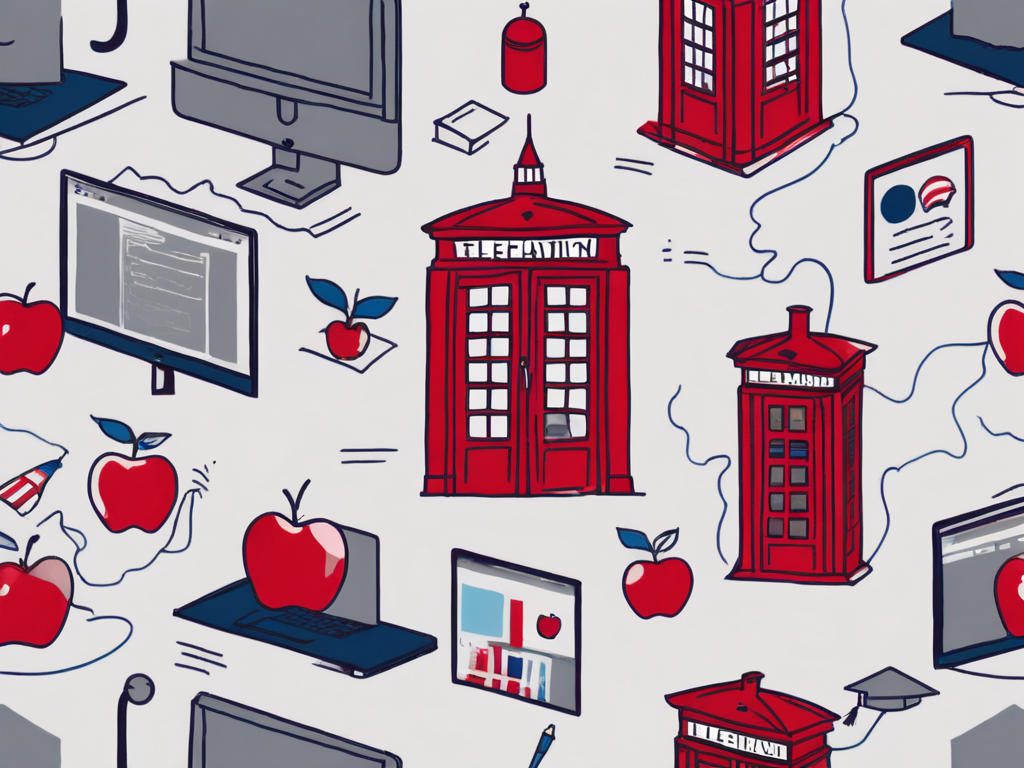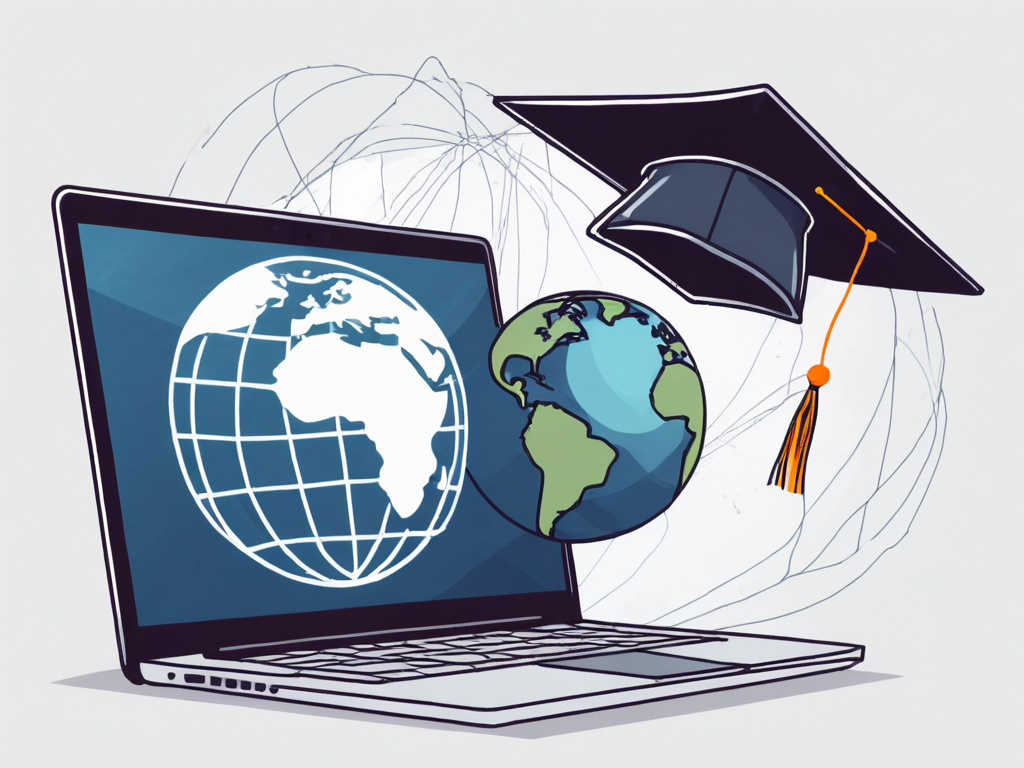Remote Content Engagement – Authentic engagement in remote learning for international students

In today’s digital age, remote learning has become an integral part of education, especially for international students. However, simply providing content online is not enough to ensure effective learning. Authentic engagement is crucial in remote learning, as it promotes active participation and a deeper understanding of the subject matter. In this article, we will explore the concept of remote content engagement and its significance for international students. We will also discuss the role of technology in facilitating remote learning and strategies to promote authentic engagement. Additionally, we will delve into evaluating the effectiveness of remote content engagement and explore future trends in this field.
Understanding the concept of remote content engagement
The concept of remote content engagement goes beyond just consuming information. It involves actively participating in the learning process and making meaningful connections with the material. Authentic engagement ensures that students are not just passive learners, but active contributors to their own education.
In remote learning, this engagement can be achieved through various means, such as interactive online discussions, virtual group projects, and collaborative problem-solving activities. By actively involving students in the learning process, educators can foster a deeper understanding and retention of the content.
The importance of authentic engagement in remote learning
Authentic engagement is essential in remote learning as it enhances the overall learning experience for international students. It helps create a sense of belonging and motivation, which are often lacking in remote educational settings. When students feel engaged and connected, they are more likely to invest time and effort into their studies, leading to improved academic outcomes.
Moreover, authentic engagement promotes critical thinking and problem-solving skills. By actively participating in discussions and collaborating with peers, international students can gain different perspectives and develop a deeper understanding of the subject matter. This not only prepares them for future academic challenges but also equips them with essential skills for their professional careers.
The unique challenges faced by international students
International students face unique challenges in remote learning compared to their domestic counterparts. Language barriers, cultural differences, and time zone variations can make it harder for them to actively engage with the content and interact with their peers.
Furthermore, international students may experience feelings of isolation and homesickness, particularly when studying in a foreign country. Without the physical presence of classmates and instructors, remote learning can exacerbate these challenges. Therefore, it is crucial for educators to address these specific needs and create an inclusive learning environment that encourages authentic engagement for international students.
One of the challenges that international students face in remote learning is the language barrier. English may not be their first language, making it difficult for them to fully comprehend the course material and actively participate in discussions. To overcome this challenge, educators can provide additional language support, such as offering language workshops or providing transcripts of online lectures. By ensuring that international students have access to the necessary language resources, educators can help them feel more confident and engaged in their studies.
Cultural differences can also pose challenges for international students in remote learning. Different educational systems and teaching styles may require them to adapt to new ways of learning and interacting with their peers. Educators can address this challenge by incorporating diverse perspectives and cultural references into the curriculum. By doing so, international students can feel a sense of inclusion and relevance, which can enhance their engagement and understanding of the content.
Additionally, time zone variations can make it challenging for international students to actively engage with their peers and instructors. When classes or group discussions are scheduled at inconvenient times, it can be difficult for them to fully participate. To address this issue, educators can provide flexible learning options, such as asynchronous discussions or recorded lectures, allowing international students to engage with the content at their own convenience. By accommodating different time zones, educators can ensure that international students have equal opportunities for engagement and collaboration.
The role of technology in remote content engagement
In the realm of remote learning, technology plays a vital role in facilitating content engagement. Various digital tools and platforms have emerged to bridge the gap between students and educators, enabling dynamic and interactive learning experiences.
Technology has revolutionised the way education is delivered, particularly in the context of remote learning. The integration of digital tools has not only made learning more accessible but has also enhanced the quality of educational content. Students now have the opportunity to engage with multimedia resources, simulations, and virtual reality experiences that bring learning to life in ways previously unimaginable.
Utilising digital tools for effective remote learning
Technology offers a plethora of digital tools that can enhance remote content engagement for international students. Virtual classrooms, video conferencing platforms, and collaboration software allow students and instructors to interact in real-time, fostering active participation in remote discussions and activities.
Moreover, the use of artificial intelligence and machine learning algorithms in educational technology has enabled personalised learning experiences tailored to individual student needs. These adaptive learning systems can track student progress, provide instant feedback, and offer customised learning pathways to optimise engagement and comprehension.
Overcoming technological barriers in remote education
Despite the numerous benefits of technology, it is important to acknowledge the technological barriers that international students may face. Limited access to internet connectivity, inconsistent infrastructure, and lack of familiarity with digital tools can hinder engagement in remote learning.
To address these challenges, educational institutions are increasingly investing in infrastructure development and digital literacy programmes to support students in navigating the digital landscape. By providing training sessions, workshops, and online resources, universities aim to empower students with the skills and knowledge needed to thrive in remote learning environments.
To overcome these challenges, educators can provide comprehensive technical support, clear instructions, and accessible resources to ensure that international students feel confident and comfortable using the technology. Additionally, incorporating asynchronous learning activities and alternative means of participation can accommodate students in different time zones and with varying levels of technological access.
Strategies for promoting authentic engagement in remote learning
To promote authentic engagement in remote learning for international students, educators can employ various strategies tailored to their specific needs and circumstances.
Remote learning has become increasingly prevalent in today’s educational landscape, especially with the rise of international students seeking quality education from afar. As educators navigate this new terrain, it is crucial to explore innovative approaches that go beyond traditional teaching methods to ensure students are actively engaged and motivated.
Fostering a sense of community in a virtual classroom
Creating a supportive and inclusive learning community is essential for international students to feel connected and engaged in remote learning. Educators can utilise discussion forums, online group projects, and virtual social events to foster interpersonal relationships and create a sense of belonging.
Moreover, establishing mentorship programmes where students can connect with peers or alumni can provide valuable support and guidance, enhancing the overall learning experience. By fostering a strong sense of community, educators can cultivate a collaborative environment where students feel empowered to share their perspectives and ideas.
Encouraging active participation in remote learning
Encouraging active participation is crucial in remote learning to ensure that international students are engaged with the content. Collaborative activities, such as case studies, group presentations, and debates, can stimulate critical thinking and foster engagement. Additionally, instructors can use diverse multimedia resources to cater to different learning styles and enhance student interaction.
Furthermore, incorporating real-world applications and industry-relevant projects can provide international students with practical experience and skills that are directly applicable to their future careers. By bridging the gap between theory and practice, educators can inspire students to actively participate and apply their learning in meaningful ways.
Evaluating the effectiveness of remote content engagement
Measuring the effectiveness of remote content engagement is essential to identify areas for improvement and to ensure the success of remote learning for international students.
Remote content engagement goes beyond just participation; it encompasses the level of interaction, interest, and connection that students have with the learning material. Understanding how students engage with remote content is crucial for educators to tailor their teaching methods and content delivery to meet the diverse needs of international learners.
Measuring student engagement in a remote learning environment
Student engagement can be assessed through various methods, such as online surveys, self-reflection exercises, and tracking participation rates. These quantitative and qualitative measures can offer valuable insights into how effectively international students are engaging with the content and the learning process.
Moreover, observing students’ digital footprint, such as the frequency of logins, time spent on online platforms, and interactions with peers and instructors, can provide a comprehensive picture of their engagement levels. This data-driven approach allows educators to identify patterns and trends in student behaviour, enabling them to make informed decisions to enhance the remote learning experience.
The impact of remote content engagement on academic performance
Research indicates that authentic engagement in remote learning positively correlates with improved academic performance. By actively participating and deeply engaging with the material, international students are more likely to retain information and demonstrate a higher level of understanding. Consequently, remote content engagement can contribute to better grades and overall academic success.
Furthermore, fostering a sense of community and collaboration in a virtual classroom environment can enhance student motivation and satisfaction, leading to increased academic achievement. Encouraging peer-to-peer interaction, group discussions, and collaborative projects can create a supportive learning environment that promotes active engagement and knowledge retention among international students.
Future trends in remote content engagement for international students
The landscape of remote learning is continuously evolving, and it is crucial for educators to stay informed about emerging trends to enhance remote content engagement for international students.
The potential of virtual reality in remote learning
Virtual reality (VR) offers an immersive and interactive learning experience, allowing international students to explore virtual environments and engage with the content in a unique way. From virtual field trips to realistic simulations, VR can provide international students with hands-on experiences and enhance their understanding of complex subjects.
The role of artificial intelligence in enhancing remote content engagement
Artificial intelligence (AI) has the potential to revolutionize remote learning by personalizing the learning experience for each international student. AI-powered adaptive learning platforms can analyze student data and provide customized content and recommendations, tailoring the learning process to individual needs and preferences. This can significantly enhance engagement and promote effective learning outcomes for international students.
In conclusion, remote content engagement plays a crucial role in ensuring effective learning for international students in the realm of remote education. By understanding the concept of authentic engagement, leveraging technology, employing effective strategies, and evaluating its effectiveness, educators can enhance the remote learning experience for international students. Furthermore, staying informed about emerging trends, such as virtual reality and artificial intelligence, can open new possibilities for remote content engagement and create more inclusive and engaging learning environments for international students.
Transform Your Teaching Career with IPGCE
As you seek to enhance your remote content engagement skills and foster authentic learning experiences for international students, consider the International Postgraduate Certificate in Education (iPGCE). This Level 7 programme is designed to elevate your qualifications, increase your chances for interviews, and open doors to career advancement. With iPGCE, you’ll join a global network of educators, gain a deeper understanding of international curricula, and enjoy the flexibility to balance professional development with your existing commitments. Don’t let inadequate credentials or isolation limit your potential. Join the UK’s #1 Teacher Training Course today and take the next step in your teaching career.






